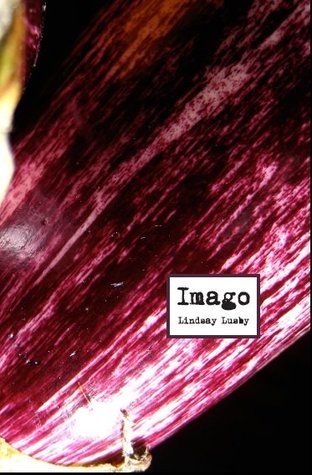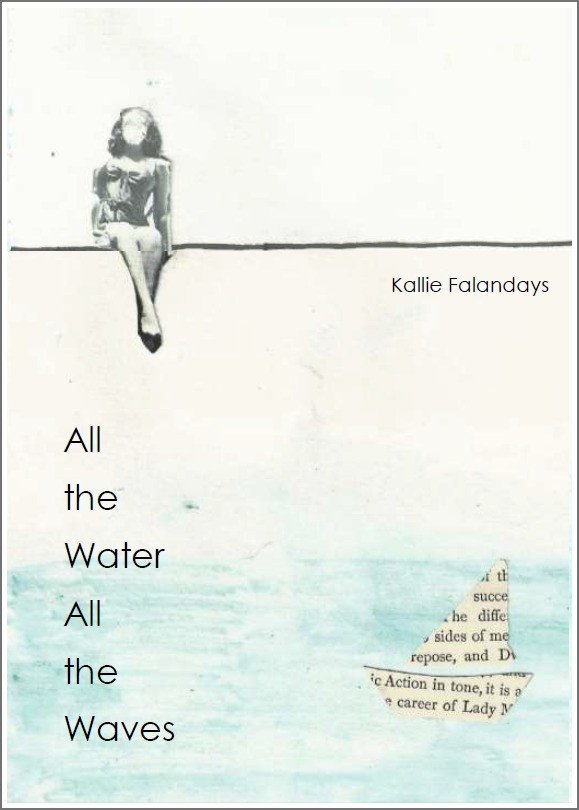Imago by Lindsay Lusby
– Reviewed by Angelina D’Roza –
The girl and her eggplant
would not be parted
These are the opening lines of Lindsay Lusby’s poem sequence Imago. The relationship between the girl and the eggplant is a deliberately absurd conceit, and as “Each night, she strokes the / smooth purple skin, blacker than black / in the absence of light”, I wonder where this is going. This debut chapbook is described on Lusby’s website as a coming-of-age fairy tale, and it has more in common with fairy tales than just their magic. By the end of the first short poem, we know much about the girl: not her name, age, the specifics, but we identify (with) her through the themes the poem brings out, questions that preoccupy what comes next. Absence recurs as loss, rejection, balanced by the potential for transformation. If she eats the eggplant’s seeds, she wonders, “would I be changed? Would I transform?”
Fairy tales often feature problematic parent-child relationships: part of the definition of “Imago” given in the epigraph is, “an idealized concept of a loved one, formed in childhood and retained uncorrected in adult life”. In poem “1 ½.”, the mother might be read in this role:
You may be wondering where her mother is.
She was last seen in her favorite red shoes
dancing her fertility dance by the jukebox.Aerosmith was singing “Sweet Emotion” when she
rode her red parade out into the streetlight.There never was a Hades—
only the pomegranate.
I’m not sure what to make of the Persephone reference: a relatively passive figure, I think, in a tug of something like love between Hades and Demeter. If there never were a Hades, Persephone was not passive, but chose to leave Demeter for the underworld. In this version, did the girl’s mother choose the underworld over her daughter (the red shoes red as a pomegranate seed)? Persephone left/was taken from her mother, not the other way round. However, the complexity of a goddess who is both innocent maiden and queen of the dead is rich with potential meaning. The reference recurs a couple of pages on:
Her mother did not leave a note
or a casserole. She did not know
she was leaving. But she did.Leave the eggplant,
take the pomegranate.Leave the girl,
take the shoes.(“2 ½.”)
OK, so the eggplant is the girl and the shoes are the pomegranate … Or is the eggplant motherhood? It’s more interesting to think about these questions than to answer them. After the first few poems, I stop trying to decipher them. There are a couple of references to riddles, but the sequence is full of colour and image and nuance that cumulates into something more interesting than code.
Sometimes there’s darkish humour: in one poem, the girl lets her eyes “stray” to “summer squash, zucchini.” In another, she “decides to become a carnivore”, and her salad is furious, stares back at her with “olive eyes”, “pimento pupils”. “The eggplant is silent as she excuses herself / from the dinner table”.
Sometimes what the eggplant has to teach her is quite beautiful:
The eggplant teaches the girl about the afterlife.
It says, When we die, we all go to
the great compost bucket, where we
experience the transcendence of
our own beautiful decomposition.If you have been good, you might come back
a rosebush.(“3 ½.”)
As is the transformation in the end:
The girl-thing strains against her seams.
Ruptures.What emerges
is asteroid and bright.(“10.”)
Death and the underworld, afterlife and transformation give enough sense of where this girl is coming from, what she’s dealing with. This chapbook isn’t the story of what or who she’s lost, but of how she negotiates the world now they’re gone. Its strength lies in its own confidence: it doesn’t lose its nerve or try to explain itself. What seemed like absurdity at the start – the eggplant, the girl’s relationship with/to it – becomes the frame and framework for new understanding.





